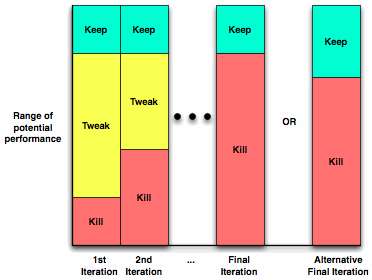I like ASTD; they offer a valuable service to the industry in education, including reports, webinars, very good conferences (despite occasional hiccups, *cough* learning styles *cough*) that I happily speak at and even have served on a program committee for. They may not be progressive enough for me, but I’m not their target market. When they come out with books like The New Social Learning, they are to be especially lauded. And when they make a conceptual mistake, I feel it’s fair, nay a responsibility, to call them on it. Not to bag them, but to try to achieve a shared understanding and move the industry forward. And I think they’ve made a mistake that is problematic to ignore.
A recent report of theirs, Better, Smarter, Faster: How Web 3.0 will Transform Learning in High-Performing Organizations, makes a mistake in it’s extension of a definition of Web 3.0, and I think it’s important to be clear. Now, I haven’t read the whole report, but they make a point of including their definition in the free Executive Summary (which I *think* you can get too, even if you’re not a member, but I can’t be sure). Their definition:
Web 3.0 represents a range of Internet-based services and technologies that include components such as natural language search, forms of artificial intelligence and machine learning, software agents that make recommendations to users, and the application of context to content.
This I almost completely agree with. The easy examples are Netflix and Amazon recommendations: they don’t know you personally, but they have your purchases or rentals, and they can compare that to a whole bunch of other anonymous folks and create recommendations that can get spookily good. It’s done by massive analytics, there’s no homunculus hiding behind the screen cobbling these recommendations together, it’s all done by rules and statistics.
I’ve presented before my interpretation of Web 3.0, and it is very much about using smart internet services to do, essentially system-generated content (as opposed to 1.0 producer-generated content and 2.0 user-generated content). The application of context to content could be a bit ambiguous, however, and I’d mean that to be dynamic application of context to content, rather than pre-designed solutions (which get back to web 1.0).
As such, their first component of their three parts includes the semantic web. Which, if they’d stopped at, would be fine. However, they bring in two other components. The second:
- the Mobile Web, which will allow users to experience the web seamlessly as they move from one device to another, and most interaction will take place on mobile devices.
I don’t see how this follows from the definition. The mobile web is really not fundamentally a shift. Mobile may be a fundamental societal shift, but just being able to access the internet from anywhere isn’t really a paradigmatic shift from webs 1.0 and 2.0. Yes, you can acccess produced content, and user-generated content from wherever/whenever, but it’s not going to change the content you see in any meaningful way.
They go on to the third component:
- The third element is the idea of an immersive Internet, in which virtual worlds, augmented reality, and 3-D environments are the norm.
Again, I don’t see how this follows from their definition. Virtual worlds start out as producer-generated content, web 1.0. Sims and games are designed and built a priori. Yes, it’s way cool, technically sophisticated, etc, but it’s not a meaningful change. And, yes, worlds like Second Life let you extend it, turning it into web 2.0, but it’s still not fundamentally new. We took simulations and games out of advanced technology for the conferences several years ago when I served. This isn’t fundamentally new.
Yes, you can do new stuff on top of mobile web and immersive environments that would qualify, like taking your location and, say, goals and programmatically generating specific content for you, or creating a custom world and outcomes based upon your actions in the world from a model not just of the world, but of you, and others, and… whatever. But without that, it’s just web 1.0 or 2.0.
And it’d be easy to slough this off and say it doesn’t matter, but ASTD is a voice with a long reach, and we really do need to hold them to a high standard because of their influence. And we need people to be clear about what’s clever and what’s transformative. This is not to say my definition is the only one, others have interpretations that differ, but I think the convergent view is while it may be more than semantic web, it’s not evolutionary steps. I’m willing to be wrong, so if you disagree, let me know. But I think we have to get this right.



